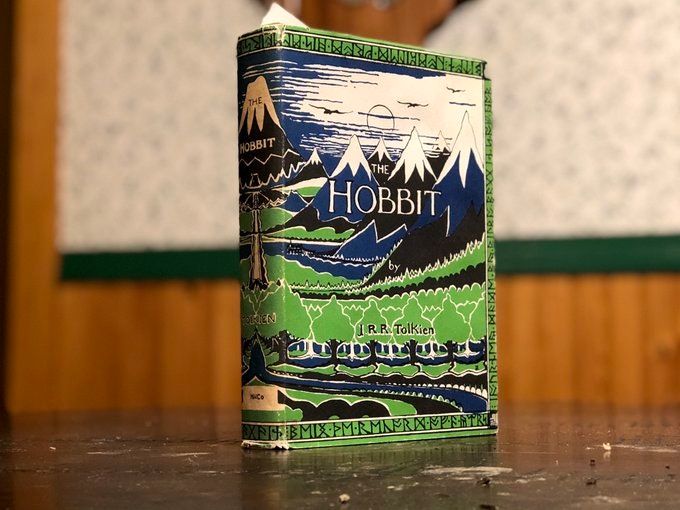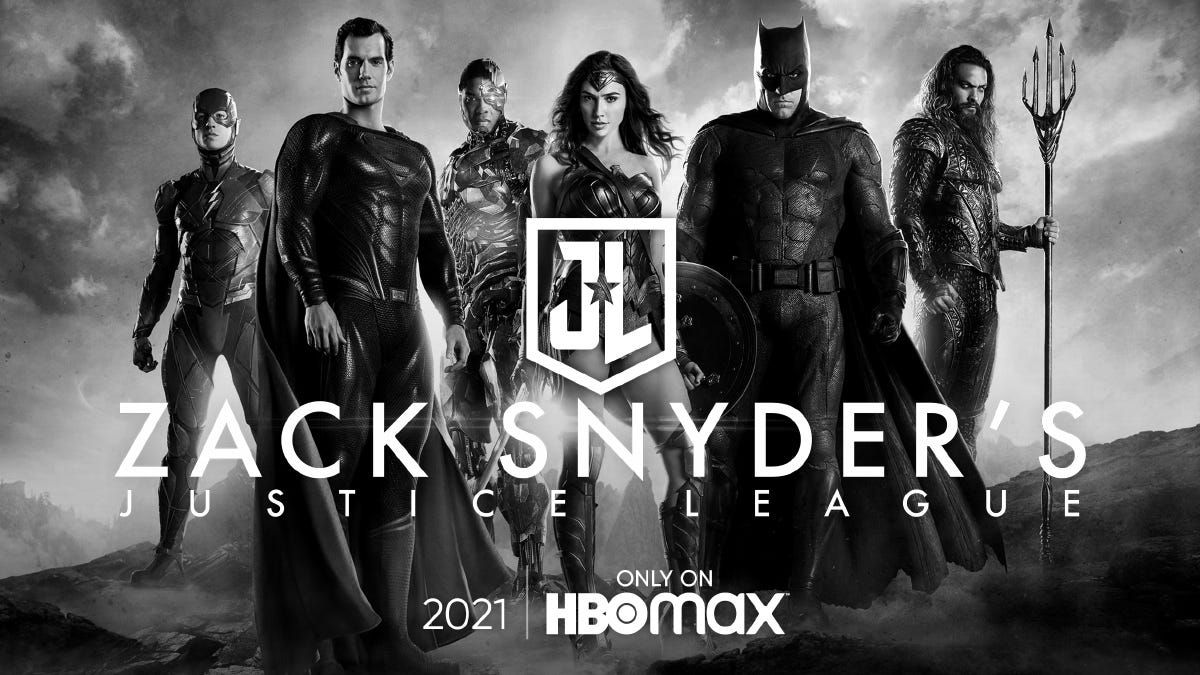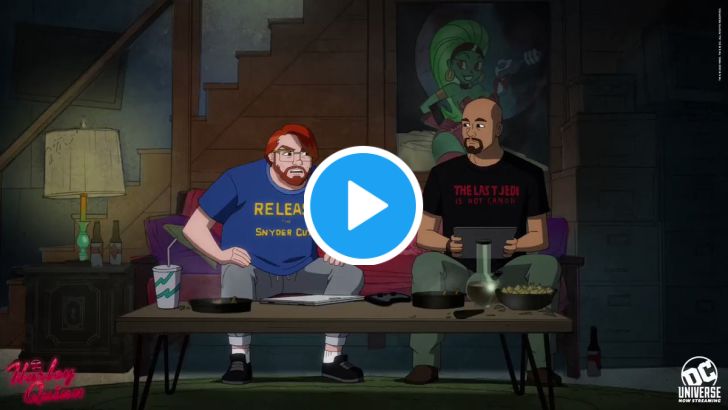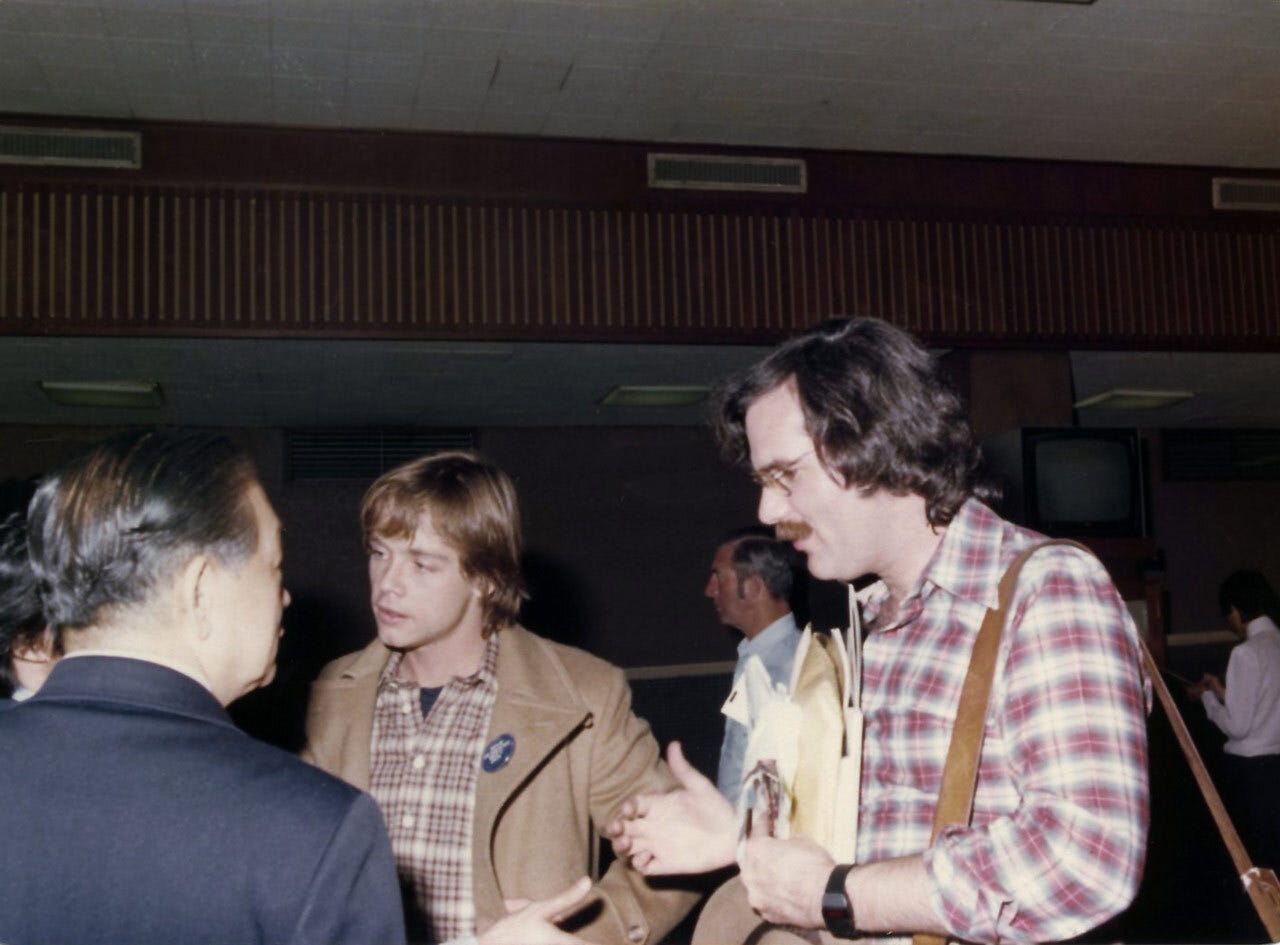Fandom's relationship with studios

It’s been a busy week! I’ve been caught up with a bunch of projects, and there has been some interesting developments in the last week that I’ll talk about in a minute, along with the usual slate of recommendations and longer reads that I found worth reading.
First up, I’ve got an update on that subscriptions thing, and on my regular book column. Let’s dig in.
Subscriptions
I heard from a handful of readers about the possibility of doing subscriptions, and they indicated that they would sign up if something was offered. So, we’ll give it a try: I flipped the switch for subscriptions. You can subscribe here: it’s $5 a month, $50 a year, and $150 for a supporting member.
As noted before, many of the regular issues will have roughly the same content: some reviews, commentary on the news, shorter interviews, reading recommendations, further readings, and so forth. The subscription side of things will have more in-depth content: stuff that requires a bit more work to put together, like longer interviews, features, reporting, and original fiction. I’ll tinker with this to figure out the right mix.
I’ll turn up the tap on this slowly. The first thing will have a feature that I’d worked on for a year or so about military war gaming, but which never found a home (and which I later killed for logistical reasons — which I’ll explain in the piece.) I’ll fix it up and get that ready once there are signups. I’m also considering an in-depth piece about history of The Expanse, looks at genre history (like what I did with Kirkus Reviews a couple of years ago), and more. I also have some bigger projects in the works, and members would get a first look at those.
So, please consider signing up to be an annual member. I’m thinking of this a bit like an NPR fundraiser: a small number of members help support this newsletter, and the work that it’ll contain. I’ll try and keep this as unobtrusive as possible. You’ll certainly have my gratitude, and you’d be helping support this sort of genre coverage when it seems to be shrinking away.
Thank you!
June Books
For the last couple of months, I’ve written a regular column on Polygon highlighting new books coming up each month. I got word last week that that’s being put on hold for the time being, presumably because of the pandemic. Absent a home for it, I’ll just feature that here on June 1st. It’ll remain here until Polygon picks it back up, or if someone else does.
#SnyderCut

Holy shit, they actually did it. After a long and sustained fan campaign, Warner Bros. is going to release Zack Snyder’s cut of his maligned Justice League sometime in 2021 on HBO Max. It’s something that a group of fans have clamored for, and it’s probably the highest-profile instance of a fan movement getting a studio to do what they want, for better or for worse.
For those of you who who haven’t followed this particular bit of drama, let’s take a step back and look at how this came to be.
In 2008, Paramount released Iron Man, which snowballed into the massive Marvel Cinematic Universe, an interconnected film franchise that built up a pretty incredible story from its intellectual property, from characters like Thor, Hulk, Black Widow, Hawkeye, Captain America, and so forth.
But Marvel isn’t the only major superhero IP holder out there: there’s DC Comics, which has its own pantheon of characters: Superman, Batman, Wonder Woman, Aquaman, and so forth. Not wanting to be caught flat-footed, they began to work on their own, overarching project called the DC Expanded Universe. While characters like Batman had been super popular after Christopher Nolan’s Dark Knight trilogy, Warner Bros. (which owns DC), decided to relaunch, opting to do the MCU, but a bit in reverse: they released Zack Snyder’s Man of Steel, a darker and more cynical take on the character, and followed up with Batman v Superman: Dawn of Justice, which backdoored a couple of additional characters, like Wonder Woman (and hinted at The Flash, I think?) After that, they released Suicide Squad (2016), Wonder Woman (2017),and then Justice League, which was the DC’s equivalent team-up film of Marvel’s The Avengers.
The problem was that this turned out to be a bit of a mess. Marvel had the right idea: introduce the characters, then team them up. Justice League didn’t really do that: Superman had been killed off at one point, and we hadn’t really had all that much time with The Flash or Aquaman. Moreover, the production hit some significant snags: Snyder completed production on the film, but left abruptly after his daughter died of suicide. Warner Bros. brought in Joss Whedon (who directed The Avengers) to complete the film, which then went to theaters.
It wasn’t a good movie, and it wasn’t well-received, either by critics, fans, or the box office. DC already had a muddled track record with this DCEU — Man of Steel was fine, Batman v Superman was a mess, Suicide Squad was flat out bad, and Justice League was bad. The only bright spot was Wonder Woman, and following its success vs. that of Justice League, Warner Bros. opted to relax their overarching universe a bit: they said that they’d focus on more character-driven stories, rather than trying to accomplish an overarching narrative. The next project in theaters was Aquaman, which was bonkers, but fun, Shazam! was a considerable amount of fun — but which largely ignored the greater DCEU altogether (aside from a couple of references), and Birds of Prey was well regarded. (Still need to see that one.) Warner Bros. scored an unexpected hit with last year’s Joker, and next year’s The Batman will largely stand on its own, but will be within the DCEU.
Hardcore Snyder fans weren’t thrilled with the final product, saying that Whedon and Warner Bros. ruined Snyder’s intended version and released a subpar product to theaters. Fair point: directors are the ones in charge of the overall vision of a project, and having two people come in to take charge on a project will see some turbulence. What these fans seized on was a Directors Guild of America guideline that’s designed to protect a director’s work from studio interference: a director’s cut. When a director shoots their film, they can put together their own cut of the film, and studios have to work with them to enact any changes.
There’s some wiggle-room here, though. In the instances of Disney and Lucasfilm, there have been a couple of interesting case studies: Rogue One and Solo. Rogue One had a famously difficult post-production period: Lucasfilm didn’t like the final result director Gareth Edwards delivered, and opted for some significant rewrites and reshoots with director Tony Gilroy to produce a final version. Edwards retained director’s credit on the film, because he went along with it and helped out.
For Solo, that didn’t happen: directors Phil Lord and Christopher Miller were fired midway through that film’s production, and Ron Howard was brought in to finish the film. In this instance, DGA rules state that a director has to have completed a significant amount of the film — 90-100 percent — in order to receive that director’s credit. Howard ended up with credit here, because he reshot most of the film. (I wrote about this for The Verge a while back, and this video essay is worth watching to fully understand this.)
In this instance, Snyder retains director’s credit on Justice League, so we know that much of the film is his, with some additional bits done by Whedon. Presumably, he signed off on some element of it before it hit theaters. But what fans had been clamoring for was a film that was purely Snyder’s, and they believed that there was an actual cut from Snyder that retained his original vision.
Thus, the #ReleaseTheSnyderCut became a thing. Fans tweeted at directors and actors demanding that Warner Bros. release it, because in their minds, it would vindicate… something.
But as hashtag movements are wont to do, it attracted some really bad actors. Disgruntled fans who really hated what Disney was doing to Star Wars and Marvel sought refuge within this movement, and pushed a number of anti-women / anti-SJW ideas into some really toxic directions, to the point where #ReleaseTheSnyderCut has become synonymous with the type of basement-dwelling trolls who harass actresses and female fans.
And it seems to have worked. Warner Bros. officially announced that it would be releasing the cut on its soon-to-be-released streaming service HBO Max in some form. It’s not entirely clear what that will look like just yet: The Hollywood Reporter says that it could be something like a four hour movie, or a sort of streaming miniseries that’s been recut and reedited.
Either way, it’s a significant investment: upwards of $20 million to put this together by rescoring, installing new special effects, and potentially bringing back actors for reshoots or at lease new voiceovers. THR notes that as Snyder’s cut exists now, it “was a semi-unfinished work, with no visual effects, no postproduction. One person who had seen that version described it like a car with no panels, just a drivetrain and some seats.”
On one hand, #ReleaseTheSnyderCut is a good example of how fans making enough noise can shift the direction of an entire studio, and resurrect a thing that that existed only in raw concept. In its press release, Warner Bros. Warner Media Entertainment and Direct-To-Consumer Chairman Robert Greenblatt specifically called them out:
Since I got here 14 months ago, the chant to #ReleaseTheSnyderCut has been a daily drumbeat in our offices and inboxes. Well, the fans have asked, and we are thrilled to finally deliver. At the end of the day, it really is all about them and we are beyond excited to be able to release Zack’s ultimate vision for this film in 2021.
The state of fandom is incredibly important in 2020: fans have helped bring about the resurrection of The Clone Wars, helped bring about The Mandalorian (in less direct fashion), the resurrection of The Expanse at Amazon, been responsible for the incredible success of the MCU, and numerous other examples of the years.
But on the other hand, it’s impossible to completely disregard what this movement means for a movement that’s mired with absolutely toxic behavior from “fans” who pitched a fit because they didn’t get what they wanted. It sets a really bad precedence, telling those toxic fans that it doesn’t matter if they’re abusive or harmful to the larger fan community: if they’re loud, they’re likely to get what they want.
This isn’t the only example of this, either. A number of Star Wars fans — particularly those who really loved The Last Jedi — saw The Rise of Skywalker as a direct reaction to the hate that arose because of Rian Johnson’s film, because it pulled back on some of the characters and themes. Similarly, Sony Pictures framing its return to Ghostbusters next year with a film that’s for the “True Fans” of the franchise rewards similar behavior.
What’s worrisome here is that most of these “fan” movements are linked by a sense of misogyny as studios increase the visibility of female, POC, and non-traditionally-gendered characters. These fans screech that some sort of imaginary SJW agenda is being shoved down their throats, as though seeing these characters are a harmful thing. Never mind that fandom isn’t a monolithic thing, and the worlds of science fiction and fantasy aren’t limited to just straight, white, men. Comics appeal to women, to trans people, to readers of color, and to people outside of the US. An increase in diversity (as pitiful as those advances have been — minuscule steps thus far) will help raise all ships, bringing about new works that’ll appeal to multitudes more fans.
DC Universe’s Harley Quinn pretty accurately summed up the caricature that these types of fans represent:

Harley Quinn @DCUHarleyQuinn#ReleaseTheHarleyCut

May 1st 20201,848 Retweets9,036 Likes
Warner Bros. is certainly aware of the level of toxicity that #ReleaseTheSnyderCut represents to the broader fandom. I’m not convinced that despite their statement about this being because of fans that they actually care what fans are doing. This announcement — coming right before the launch of HBO Max — is a nice bit of publicity for the company’s incoming streaming service, which has to muscle its way into the public to win over their money from the likes of Amazon Prime, Apple TV +, Disney +, Hulu, Netflix, Peacock, and so forth. Snyder’s Cut represents a pretty good piece of exclusive content for them to pick up: it somewhat exists already, and despite the investment, can be put together in a way that’s cheaper than an entire TV series.
On an academic and filmmaking perspective, it’ll be an interesting thing to see and compare to the final version that hit theaters. What differences will be between the two projects, and will they actually be fundamentally different? We’ll find out next year.
RIP Charles Lippincott

When Star Wars hit theaters in 1977, it was a runaway hit that changed the history of filmmaking forever. Nowadays, the marketing towards science fiction is commonplace, with studios taking films, props, and cast members to conventions and other fan spaces to drum up attention and excitement for those projects.
But what we have today was far from a sure thing, and a key reason for Star Wars’ early success, I think, came down not just to the story, special effects, and state of theaters at that time: it was how Lucasfilm marketed the film to science fiction fans well in advance of the project. That was the result of work by Charles Lippincott, who unexpectedly passed away this week.
Charley was Lucasfilm’s head marketing guy in 1975, tasked with drumming up support for Star Wars. He was already familiar with science fiction and comic book fandom, and after production had begun, began bringing reels of uncompleted footage to conventions around the US, like MidAmeriCon and Comic-Con. This wasn’t something that was done all that often at the time, and it gave fans an early look at the project and helped to lay the groundwork for the enormous fandom that would eventually come. He was also instrumental in inking deals with Marvel Comics and Kenner Toys, two huge things that kept the torch going. Without him and his insights into fandom, Star Wars as it exists today probably wouldn’t exist.
I knew Charley casually: we were Facebook friends. He had apparently had a bad split from Lucasfilm in the late 1970s, but worked on other projects like Alien and Judge Dredd. He eventually settled in New Hampshire, and maybe 6-7 years ago, he began posting up pictures of archival material on Facebook that he had kept over the years. What he had was fascinating to take in: old marketing materials, concept art, interviews, and more, providing a window into some element of a film’s production that you don’t usually see in behind-the-scenes commentaries or featurettes.
We spoke off and on over the years — he was always gracious with questions and answers. It’s a shame that he’s gone: he had plenty of interesting stories, and I’ll miss seeing some random piece of art from Alien or Star Wars pop up in my feed.
Currently Reading

I finished Vagabonds by Hao Jingfang / Ken Liu. I was going to write up a review, but the news above took over that. I’ll try and get that done for the next letter. I also finally finished a re-read of The Hobbit, which I’ve been reading to Bram little by little over almost the course of an entire year. It’s been a fun journey, and I picked up on little nuances and things that Tolkien did that I’d forgotten about or not picked up on when I first read it, like the entire final chapter, which is just a beautiful epilogue. Now, I’ll need to find another good book to read him before bed. I’m thinking it might be time for Redwall.
In non-bedtime story readings, I’ve got the following on my list: Dune by Frank Herbert, The City We Became by N.K. Jemisin, and Burn-In by P.W. Singer and August Cole. I’m making steady progress through Dune, and I’m enjoying the hell out of it — like The Hobbit, rediscovering things that I had long forgotten about. It’s an extremely modern book, and I think it’s aged well.
The City We Became is one that I’m absolutely loving. I’ve really loved Jemisin’s novels, particularly her Broken Earth trilogy, but I’ve found them to be dense and careful narratives. This one is like a shot of adrenaline: I’m blowing through it, and I’m loving its message and characters. Burn-In is a fun ride so far, and a very different sort of science fiction thriller. I’ll have more to say about it later.
After that, I’ve got Martha Wells’ Network Effect, Becky Chambers’ To Be Taught, If Fortunate, and Robert Jackson Bennett’s Shorefall on the immediate to-read list.
Further Reading
- Charlie Jane Anders Writing Teaches You To Write. When Charlie Jane Anders wrote for io9, she had a regular series of posts about writing science fiction and fantasy. I’ve always felt like it would have made for a great how-to book, but that never happened. Now, she’s writing a new such column at Tor.com, which looks like it’ll be fantastic.
- John Scalzi Interview. In case you didn’t get it or see it, my last newsletter featured a long interview with John Scalzi, which you can read here.
- May Books. Over on Polygon, I rounded up some books coming out in May that you should check out.
- New Star Trek. Get ready for another Star Trek series. CBS greenlit Strange New Worlds, which sounds like the adventures of the U.S.S. Enterprise prior to Kirk. Color me excited.
- Stormtroopers and Guns. A couple of weeks ago, a woman dressed as a stormtrooper was arrested by Canadian police. Over on Cosplay Central, I wrote about the incident and why I’m increasingly worried about carrying a prop gun when I go out trooping.
- Ten Thousand Doors of January Review. Alix E. Harrow’s Ten Thousand Doors of January hit paperback the other week, so I republished my review of it over on my website. Short version: it’s my favorite fantasy novel of 2019, and you should read it.
- What’s In My Bag? I noted a while back that I was in another newsletter, What’s In My Bag?. That newsletter is now out to its respective subscribers, and you can read what I carry with me (you know, when we could go out) here. Give ‘em a subscribe while you’re at it.
- X-Wing Sizzle Reel. Someone went and put together a music video for Kenny Loggins’ Danger Zone with all of the X-Wing scenes from Star Wars. It’s amazing and my new favorite thing.
As always, thank you so much for reading. Let me know what you think (either in the comments or via email), and what you’re reading these days.
Next week, look for a new interview with Marko Kloos, author of the Frontlines series, about his upcoming continuation of that story, along with a review of Vagabonds, and some other stuff.
Andrew